According to Srimad Bhagavatam (4.20.24), Maharaja Prthu prayed for millions of ears so that he could hear the glories of Lord Krishna’s lotus feet from pure devotees. This emphasizes the importance of associating with like-minded devotees and listening to the Holy Name and serving the Lord and His devotees to gain access to transcendental knowledge as well as enhance one’s affection for Sri Krishna.
The exalted position of Sri Radha-kunda, “lake of Radha,” is praised by the great saint Raghunatha dasa Goswami with these words:
Although Sri Govardhan is the area where the confidential loving pastimes of the Divine Couple take place, there is still one place in Vrindavan still higher. All the other pastime places are not equal to a mere shadow of the glories of Radha-kunda, which is as dear to Krishna as Srimati Radharani Herself.
(Vraja-vilasa-stava)
By merely bathing once in Radha-kunda one can be overflooded with the most exalted divine love.
radhika-sama-saubhagyam sarva-tirtha-pravanditam prasida radhika-kunda snami te salile subhe
Your good fortune is equal to that of Radhika herself. You are honored by all holy places. O Radhika-kund, please favor me. I am now bathing in your sacred waters.

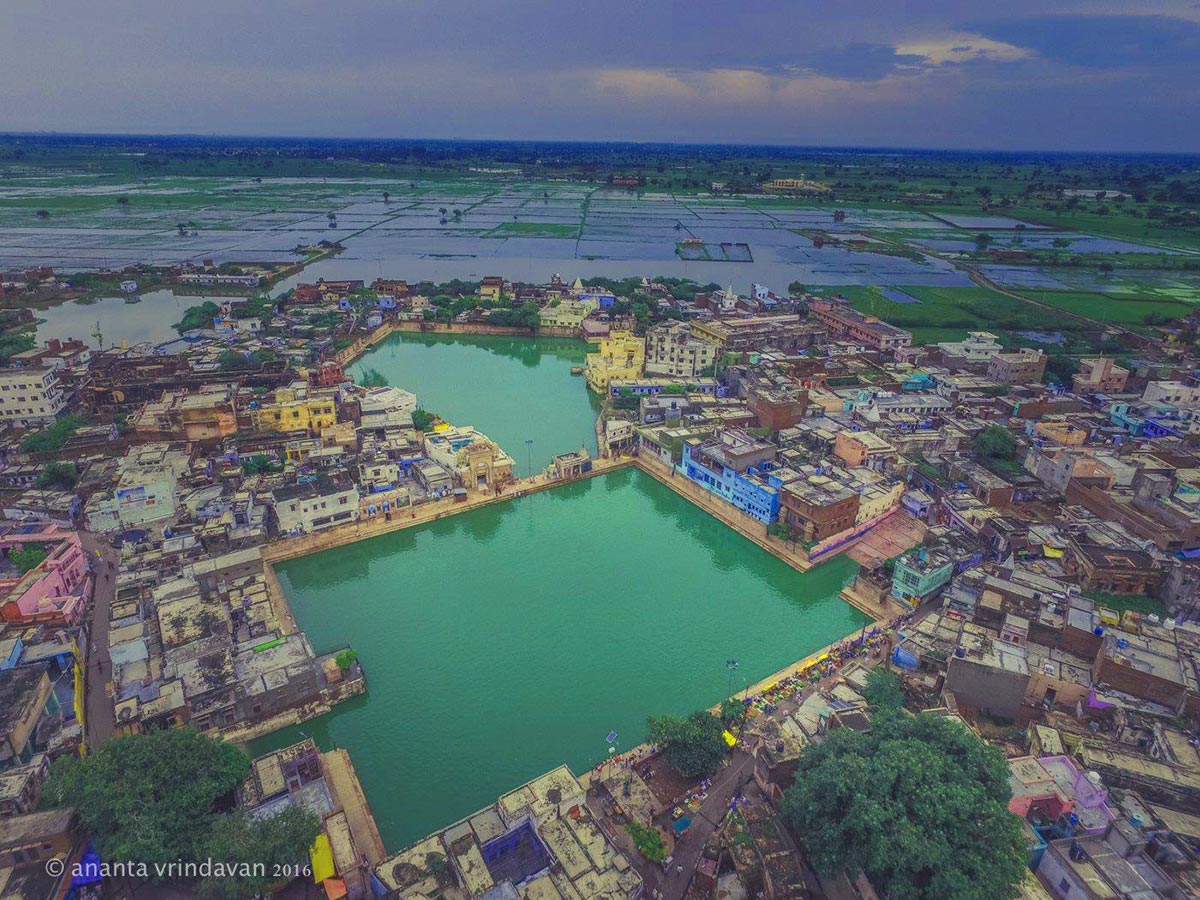
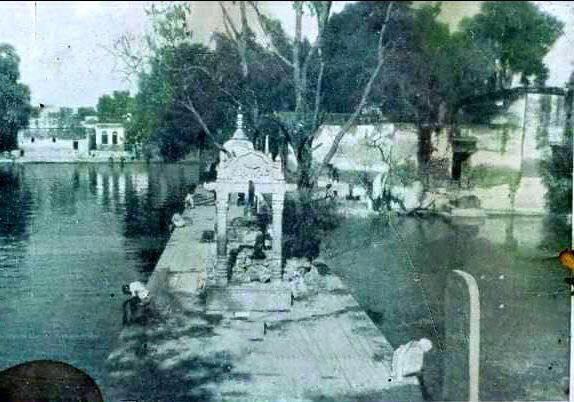
udbhutam krsna-padabjad arista-vadhatas chalat pahi mam pamaram snami syama-kunda jale tava
You were born from the lotus foot of Krishna on the pretext of his killing Arista. O Syama-kunda, please protect me, a most fallen soul. I am now bathing in your waters.
Varsana is worshiped as the place where the Queen of Vrindavan holds court for six months a year. It is filled with gardens and ponds like Radha Sarovara in the Gahavarvana Forest, which remind us of Radha and Krishna’s pastimes.
Who could ever forget the walk through the forest of Varsana that brings one to the magnificent Sriji Mandir? Who could forget Mayura-kutir, the place where Radha and Krishna took the forms of peacocks to dance Their famous peacock dance? And who could forget the innumerable holy places distributed over the four sacred hills, which according to ancient scriptures are the heads of Brahma, the creator of the universe?
In Varsana, an important pastime took place, by which Lord Krishna assumed a golden color, thus indicating His future appearance as Sri Caitanya Mahaprabhu. For details, ask one of the residents at Pili-Pokhara.
The tranquility of Varsana, and the atmosphere filled with remembrance of Radha and Krishna, make it an ideal place for our annual Holy Name Retreat, which is highlighted by a 12-hour kirtana in the midst of the wish-fulfilling trees of Gahavarvana Forest.



Here’s a beautiful song the residents of Vrindavan sing about Varsana:
O Krishna, please come to Varsana. Your beloved Radha is calling You.
O Krishna, if You do not know the way, then just come, walking street after street, and follow the call of Radha.
All of a sudden You will see a tall hill, on which the gem-studded palace of Your Radharani stands.
Just come up the stairs step by step – Your Radha is calling. With the peacock feather on Your crown and rings in your ears, You will appear very sweet.
On a flute made of fresh bamboo You will play some beautiful notes, or You might come through Sankari-khor and pass Your lake.
In Varsana there are pots filled with butter and sugar candy that You can eat with Your own hands.
Please come – Your beloved Radha is calling You.
Nandagrama or Nandgaon is the village where Krishna lived with His parents, Yashoda Mayi and Nanda Maharaja. After leaving Gokula due to the demons’ disturbance, Nanda Maharaja first stayed at Shakatikara (Chhatikara), then at Dig and Kamyavana, before finally settling at Nandagrama where he built a permanent residence.
Krishna was about six years old when Nanda and Yashoda arrived at Nandagrama, and He lived there until He was almost eleven. It is said that He left to reside in Mathura with His actual parents, Vasudeva and Devaki, to whom He was born in Kamsa’s prison cell. Nandagrama holds significant importance for its association with Krishna’s early life, and it is a must-visit for those seeking a deeper understanding of His divine pastimes.
Nandagrama, which means the village established by Nanda, is home to Nanda Baba’s palace built on the Nandishvara Parvata hill, believed to be an expansion of Lord Shiva. Nandishwara, the name of Lord Shiva, signifies that he is the Lord of Nandi, the famous bull carrier. As per the Puranas, Lord Shiva underwent penance for a long time and prayed to Krishna to allow him to witness His transcendental pastimes by appearing as a hill in Vrindavana. He hoped to receive the dust of their lotus feet on his head as Krishna and the gopis walked on top of him. Hearing Lord Shiva’s request, Krishna agreed and instructed him to manifest as a hill in the vicinity of Nandagrama, where in the Dwarapa-yuga, He would perform His kaishora-lila pastimes. Thus, Lord Shiva appeared as Nandishwara Parvata, also known as Nanda Hill.
In the Bhakti-ratnakara it says:
“O Srinivasa, see the home of Nanda Maharaja called Nandishwara. Disguised as human beings, Krishna and Balarama enjoyed Their pastimes here. See here the boundary of Nanda Maharaja’s residence. To the east of Nanda Bhavana is a wonderful garden. Coming from Yavat, Radharani would come here with Her friends.”
Vrindavan town sits beautifully on the banks of the Yamuna River, one of the guardians of the dhama. The town is also known to host more than 5000 temples, with the most prominent being those of the Six Goswamis.
Make it a point to visit the famous Krishna-Balaram Temple, which was established by His Divine Grace A. C. Bhaktivedanta Swami Prabhupada and which he called his home in this world. Inside the temple gates you’ll also find his Samadhi Mandir as well as the seat of the Vrindavan Institute for Higher Education (VIHE), which organizes our annual retreats. In Vrindavan, we also find the self-manifest deity of Gopesvara Shiva there, along with Srila Rupa Goswami’s deity of Yogamaya (Paurnamasi). These together with Vrindavan’s dust, which is freely available in any of Vrindavan’s lanes, bless any pilgrim with full success on their pilgrimage.
Five hundred years ago Lord Krishna appeared as the Yuga avatar, Lord Sri Chaitanya Mahaprabhu. When Lord Chaitanya came to Vrindavan in 1515, it was practically a forgotten place, it was a deep jungle. The holy places of Krishna’s pastimes were practically lost & forgotten. Lord Chaitanya discovered many of the places where Krishna performed His divine pastimes. Later on He sent His prominent disciples, who later became the six Goswamis of Vrindavan, to excavate all the other places of Krishna’s pastimes and establish magnificent temples in Vrindavan.
Srila Prabodhananda Saraswati Thakura gives us some affectionate advice: “O saintly person, if you cannot suddenly renounce the dreamlike world, then day and night meditate on Vrindavan. Worship Vrindavan’s king and queen. Always chant Their holy names and hear Their glories. With food, clothing, and other gifts, serve the residents of Vrindavan.” (Vrindavan-mahimamrita, Sataka 1)
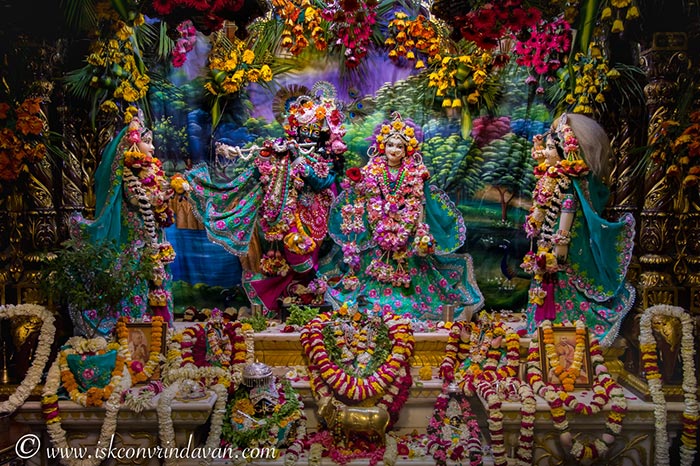
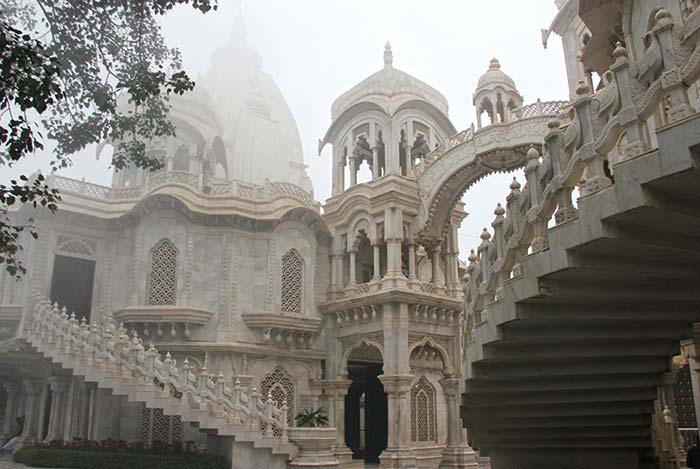
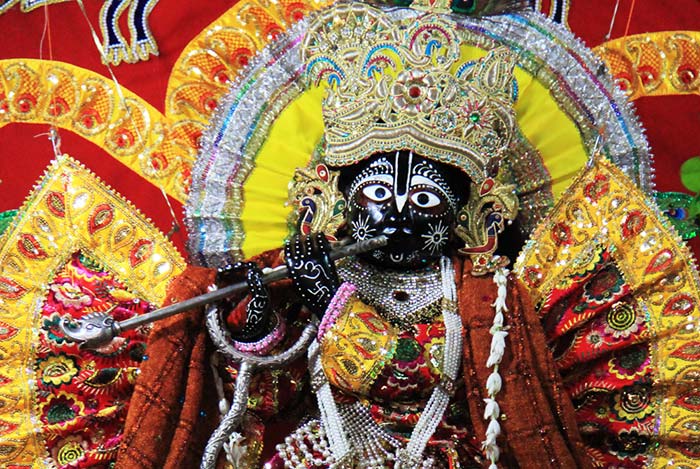
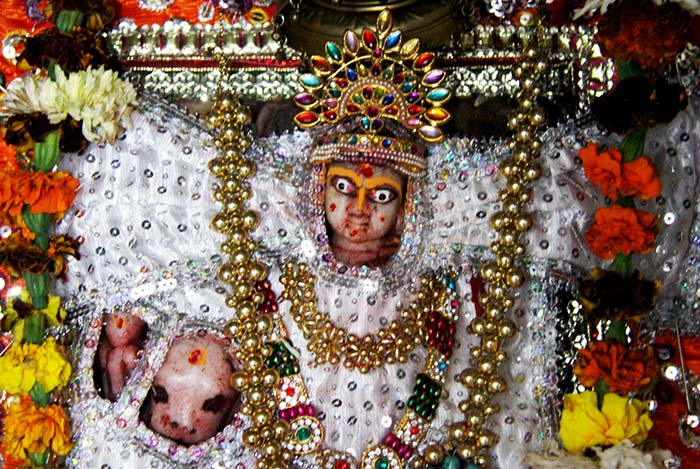
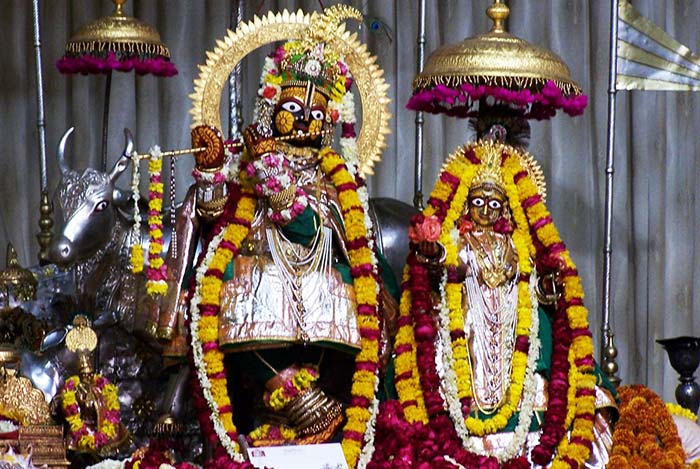
jayatam suratau pangor mama manda-mater gati mat-sarvasva-padambhojau radha-madana-mohanau
Glory to the all-merciful Radha and Madana-mohana! I am lame and ill-advised, yet They are my directors and Their lotus feet are everything to me.
divyad-vrndaranya-kalpa-drumadhah srimad-ratnagara-simhasana-sthau srimad- radha-srila-govinda-devau presthalibhih sevyamanau smarami
In a temple of jewels in Vrindavan, underneath a desire tree, Sri Sri Radha-Govinda, served by Their most confidential associates, sit on an effulgent throne. I offer my most humble obeisances unto Them.
sriman rasa-rasarambhi vamsi-vata-tata-sthitah karsan-venu-svanair gopir gopinathah sriye ‘stu nah
Sri Srila Gopinatha, who originated the transcendental mellow of the rasa dance, stands on the shore in Vamsivata and attracts the attention of the cowherd damsels with the sound of His celebrated flute. May they all confer upon us their benediction.
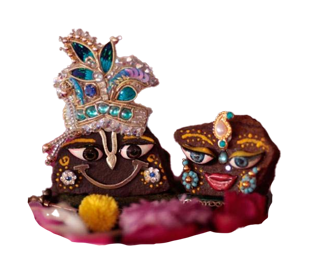
O Govardhana, O king of all incomparable great mountains, O hill that became an umbrella with the arm of your own Lord as the handle and then destroyed the pride of the deva king madly attacking with raised weapons, please grant the residence near you that is so dear to me.

Welcome to our peaceful retreat center, where you can escape the hustle and bustle of daily life and reconnect with yourself and eternity.
Our center is nestled in a tranquil location, surrounded by beautiful scenery and natural landscapes.